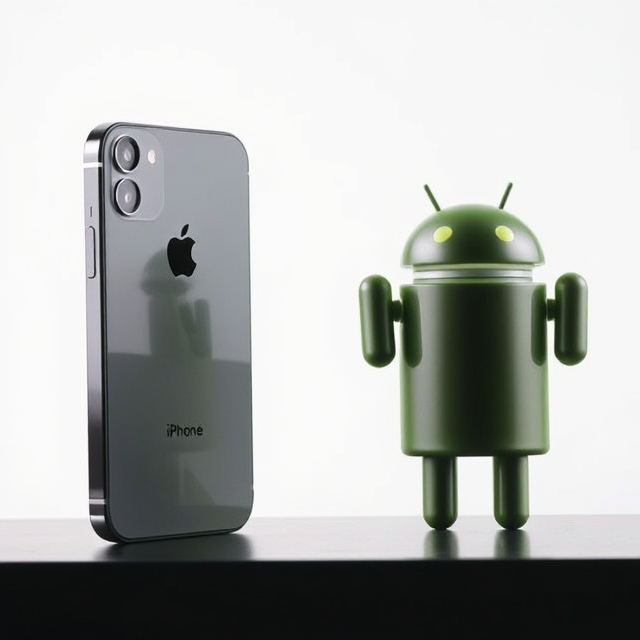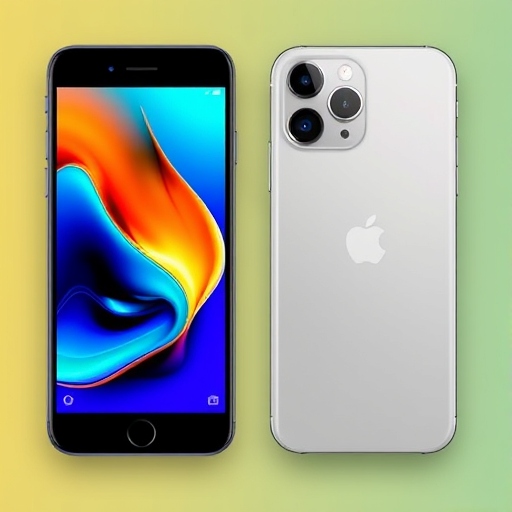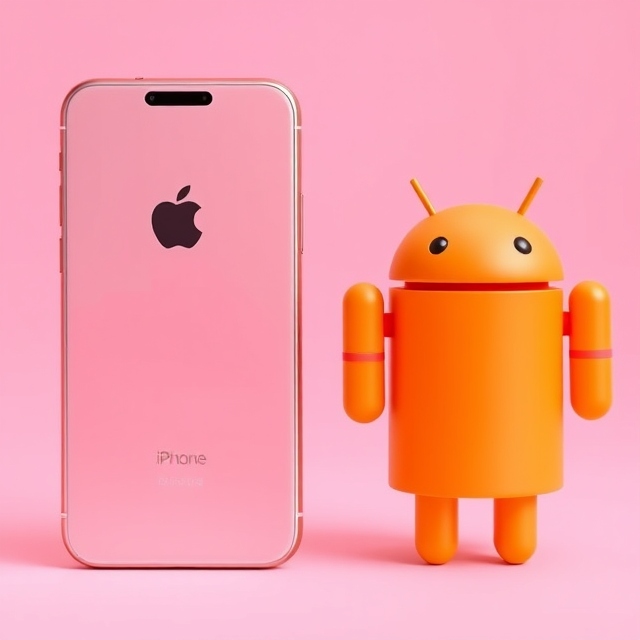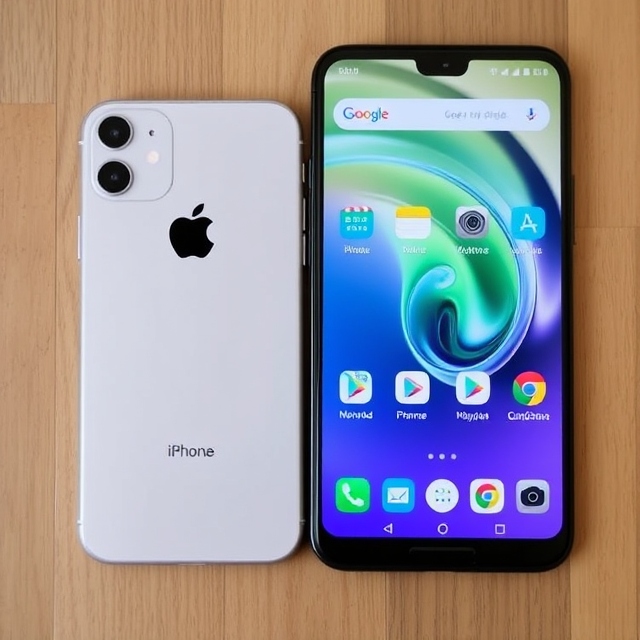The classic debates between the Apple and the Android users usually dominate conversation in the mobile phone arena. Both platforms have certain strong points and weaknesses that almost make the choice subjective at times. This article wishes to discuss parameters like design, operating systems, performance, customizability, and pricing that will show just how different the Apple and Android devices are. This article will arm you with some information as to which phone will suit your needs the best.
Design and Build
Apple is synonymous with great modern design and extremely high build quality. Their elegance in the manufacture of each new iPhone model, out of high-quality materials like aluminum and ceramic glass, is without parallel. Apple is therefore an elegant finish at design. And, although the clientele you have always held assures a sleek and premium feel on all devices made by Apple.
Android phones tend to diverge very much in designs and material. On one side are the most inexpensive models, often made of plastic. On the other end are the totally classy metal and glass designs. Opposition had another flagship as the prettiest Android phones, quite in style to compete with the iPhone in some respects. Given that seemingly limitless manufacturers build Android devices, quality tends to fluctuate more.
Verdict: Apple has consistently better design quality; hence Apple is for those who prefer good designs; Android certainly provides more variety and flexibility.

Operating System: iOS vs Android
iOS is known for its ease of use, stability, and connectivity with other Apple products. The operating system is user-friendly and constantly updated to keep the device secure. With features like FaceTime, iMessage, and continuity in collaboration between different Apple devices, it’s going to be hard to step outside of Apple’s ecosystem for those already inside.
Android is a product of Google, and there’s unique customization on how the operating systems are experienced depending on device manufacturer. Users can change themes, install custom ROMS, and just about tweak anything about the interface. Because it is open source, this opens opportunities for innovations; the downside, however, is fragmentation. This is exactly the reason some Android mobile models do not get upgrades on time because a few manufacturers are just slow in rolling out these upgrades.
Verdict: iOS for uniformity and stability; Android for customization and flexibility.
Performance and Hardware
Apple enjoys combining both the hardware and software, this naturally leads to amazing optimization. With the A-series chips powering the iPhones, it’s one of the leading chip families, with excellent performance along with efficiency, to challenge the competition. An iPhone can do gaming, video editing, and multitasking with finesse.
There’s a set variety of performances within Android devices, from brand to price range. A flagship Android phone like the Samsung Galaxy S series and Google’s Pixel devices responds with the most ingenious processors, giving competition to the best. However, mid-range and budget Android phones do often suffer in comparison to their flagship counterparts.
Verdict: Performance-meter in favor of apple, while Android offers a higher lineup in every respect specifically for every price range.

Camera Performance
Camera is always an important reason for many smartphone buyers. iPhones are famous for having consistent and reliable camera systems that deliver natural results. Features like Cinematic Mode, Night Mode, and Deep Fusion make the experience of photography and videography great.
Android phones offer a different caliber of camera features. Brands like Google and Samsung rely on computational photography, and in many cases, do outperform iPhones under low-light scenarios and dynamic ranges. Not to mention, other Android phones may be having an increasingly higher megapixel and periscope zoom lens feature.
Verdict: A much more consistent and natural approach to photography go Apple; however, a more innovative feature set and diverse camera experience are supported in Android.
Customization and User Experience
Customization is one of Android’s biggest advantages. You can change out widgets, themes, and basically the entire user interface. Android’s flexibility allows users to customize their phones to their hearts’ content.
On the flip side, iOS is much more rigid but offers a more streamlined and consistent user experience with that being the trade-off for customization.
Verdict: For customization, it is Android in a landslide. For simplicity and ease-to-use experience, you opt for Apple.

App Distribution and Software Support
The App Store is synonymous with quality apps and rigorous security features. Developers usually prioritize iOS app development due to the profit margin and uniform hardware on iPhones.
However, the apps in the Google Play Store experience a range of quality. Besides, there are alternative third-party app stores on Android, providing users with more freedom, though with a possible security compromise. While Apple will keep its devices up to date for many years, Android’s policy on updates is at the mercy of individual manufacturers.
Verdict: Apple provides better quality of apps, longer software support, while Android provides more choices and flexibility of apps.
Battery Life
There is some variation between platforms as far as battery life performance is concerned. Apple has fine-tuned its devices for good battery life with lower capacity. Such additional features like optimizing battery charging would improve the health of batteries.
Android phones come with much larger batteries, multiple charging options, and faster charging. Many Android phones have support for features such as reverse wireless charging and ultra-fast charging speeds that Apple doesn’t provide.
Verdict: Android takes the cake for longer battery longevity and innovative charging features. However, Apple gained much of this efficiency to offer a steady performance.

Price and Value
Apple has iPhones at a high-premium cost. So, while starting at an above point, iPhones usually tend to be very good in terms of their resale and investment value.
Android caters to the needs of many budgets-from the best low model to the most extreme high-end flagship. That said, access to Android is provided for the larger population. Yet, there is no question that budget Androids do not last long or young in phones when compared with iPhones.
Verdict: Android takes it as far as price and variety. For value and investment in the long run, Apple was the better choice.
Ecosystem and Integration
One of the areas Apple prides itself on is its ecosystem. The seamless integration offered between devices such as iPhones, iPads, Macs, and other Apple devices ensures ease of working and comfort. AirDrop, Handoff, and Universal Clipboard make it easier to switch between devices.
Android does offer ecosystem integration but is less cohesive due to multiple manufacturers being involved. However, Google’s ecosystem is getting stronger with products like Pixel devices, Google Nest, and Chromecast.
Verdict: Apple has a more integrated ecosystem, whereas Android gives users more options.
Final Thoughts: Which Phone Should You Choose?
Choosing between Apple and Android ultimately depends on your preferences and priorities:Choose Apple for premium design, constant performance, a secured, easy-to-use interface, and seamless ecosystem integration.
Choose Android if you want customization, different hardware options, exciting features, and value for money.






